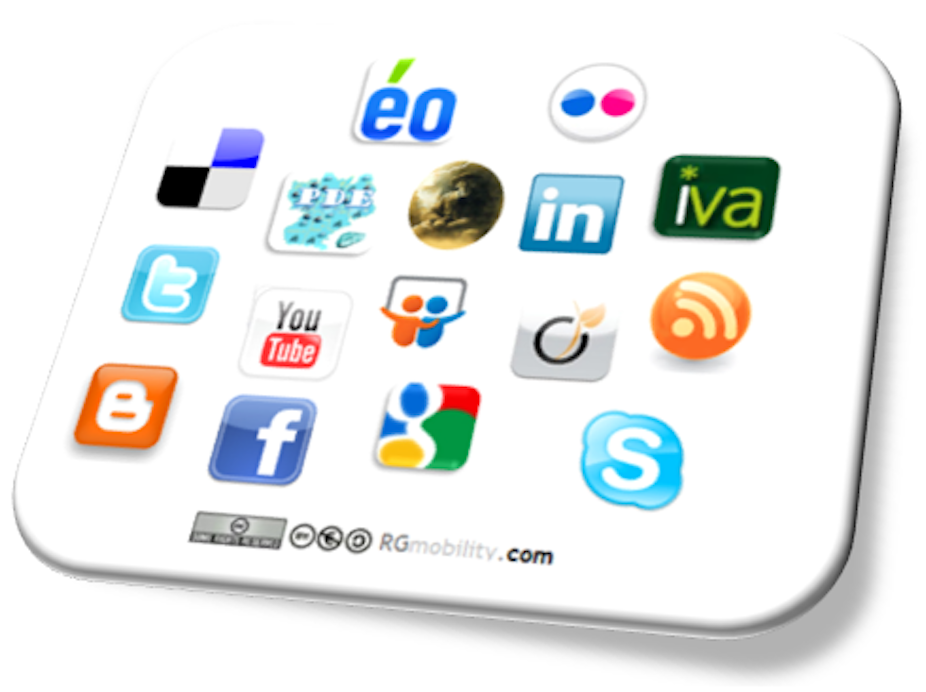Pretty soon, not being involved in social media will be just as implausible as not having a telephone. If my 80-year-old dad is on Facebook and women over 55 are the fastest growing demographic on the site, then it’s fair to say that social media tools aren’t the province of the young.
Talking about social media as a revolution is no overstatement. And we can and must bring that revolution to healthcare. In using these tools, we have unparalleled potential to improve people’s health – there’s no doubt that social technologies will transform healthcare.
This week I addressed a Hospital Alliance for Research Collaboration (HARC) forum in Sydney about bringing the social media revolution to health care. You can search #HARCsm on Twitter to see the discussion.

Advantages of social media
Electronic tools merely facilitate broader, more efficient transmission by overcoming inertia and friction. They’re low cost or free and they can help advance research into rare diseases through creating virtual registries.
We’ve had our own experience of this at Mayo Clinic. Katherine Leon was only 38 when she experienced a Spontaneous Coronary Artery Dissection (SCAD) that resulted in a heart attack after the birth of her second child.
No one could tell her what the risk of a second heart attack could be, as the only study into the condition at the time had involved a small group of people.
She found an online SCAD support group, who banded together and asked Mayo Clinc if we wanted to study them. The result was a successful pilot study with international participants and more research planned.
The Mayo Clinic story
The Mayo Clinic Center for Social Media has a mission to lead the social media revolution in healthcare, contributing to the health and wellbeing for people everywhere. It might sound like a grandiose vision, but we think it’s entirely achievable.
When I first realised in 2005 that in moving towards social media we could capitalise on much of what was already sitting on the Mayo Clinic website, we had 900 downloads of our audio files a month.
In the first month after we began podcasting, we had 74,000 downloads – that’s an 8,217% increase.
We now have more than 260,000 Twitter followers, 65,000 Facebook connections and the most popular medical provider channel on YouTube, attracting 5000 visitors a day.
We asked ourselves about YouTube: is this where a serious organisation like the Mayo Clinic really wants to be? Isn’t that where all the skateboarding squirrels are? But YouTube is the second biggest search engine, and we have used it to reach out to patients.
On our YouTube channel, we broadcast segments with Mayo Clinic doctors, who talk about conditions and are accessed by patients who often can’t get this information anywhere else.
A good example is the video from Dr Phil Fischer below on the rare Postural Orthostatic Tachycardia Syndrome (POTS), which has had nearly 40,000 views.
This video allowed Hayley Lairmore, 13, who had been vomiting up to 12 times a day for six months, to finally get a diagnosis.
After being told repeatedly by doctors there was nothing physically wrong with Hayley and that she needed counselling, her mother Christine searched for the symptoms online and found a blog from a girl with POTS who mentioned Dr Fischer’s work. From there, they saw the video, and decided to travel to Mayo Clinic for care.
Hayley is now leading a normal life.
Our doctors also use YouTube clips to build rapport with patients before they step foot in the consultation room, and they can help patients develop an understanding of the basics of their condition so they come to the consultation fully prepared and engaged.
What’s more, we’ve just launched our first public health campaign: the Know Your Numbers campaign aims to educate patients about risk factors for heart disease.
A parody of the 1980s hit 8675309 Jenny, in the video the middle-aged protagonist urges the girl he loved in his youth to “know your numbers: blood pressure, lipids and BMI”:
Catching up
In Australia, as in other places, there are enthusiastic adopters of social media tools and those who are more cautious, even fearful, of what embracing social media might mean for their organisations.
But Mayo Clinic is a highly respected healthcare organisation that had an awful lot to lose if its social media experiment went awry. And if we can do it without the sky falling in, so can others.
If they don’t, they risk leaving this powerful medium to those who don’t have patients’ best interests at heart. These people are already actively using social media, and the health community needs to be equally present: the solution to pollution is dilution. Getting the message out there can only help consumers of health care make informed choices.
Really, there’s no stopping the tide. For those of you who block social media in your workplaces, let me introduce you to the iPhone. Employees will have access to the Web and to social sites whether you allow it on your network or not. What you can do is make sure they know the ground rules by devising sensible guidelines for responsible social media usage.
The fact that HARC – a collaboration between the Sax Institute, the Clinical Excellence Commission and the Agency for Clinical Innovation – invited me out here to speak to the health-care community shows this is on the agenda in Australia. People are thinking about the great opportunities they have to better serve patients.
Hand-wringing about the merits and dangers of social media is as productive as debating gravity. In any case, social media isn’t some wild thing you do for its own sake, it’s what you do to do your job better.
And applying it to health care isn’t just inevitable: it’s the right thing to do in the interests of patients.

